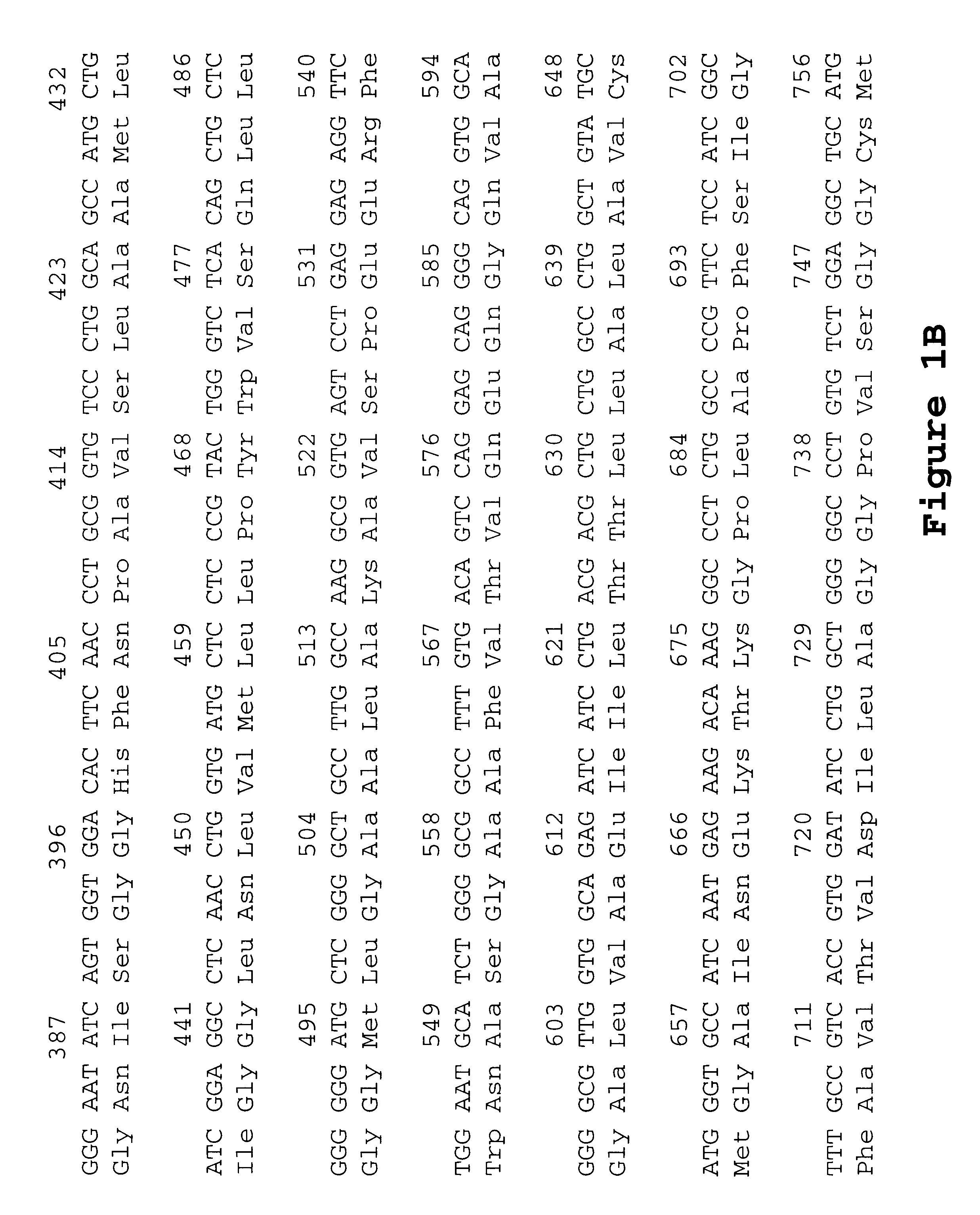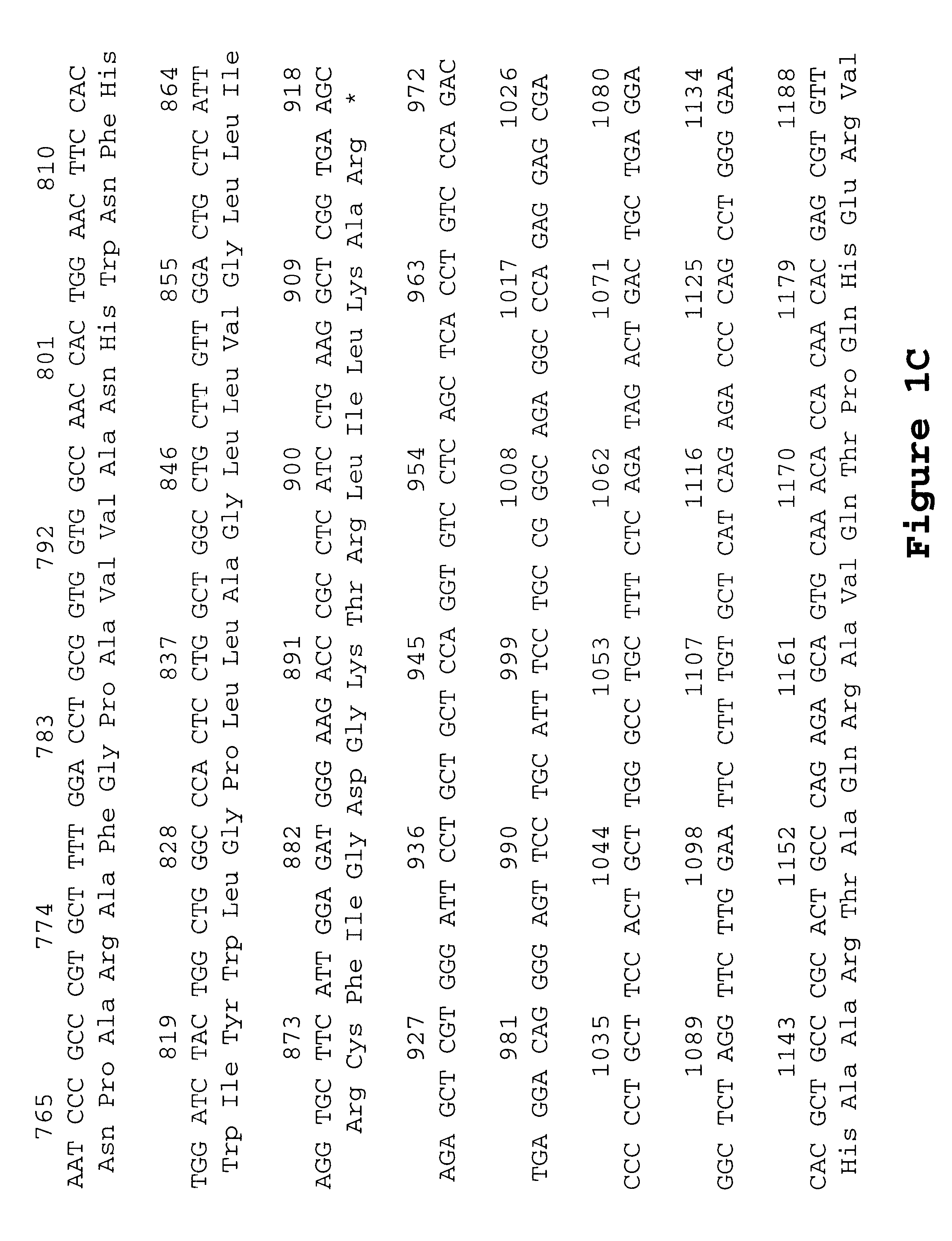Aquaporin-8 variant
a technology of aqporin-8 and aqporin, which is applied in the field of aqporin-8 variant, can solve the problems that aqp8 does not allow transmembrane transport of urea or glycerol, and achieve the effect of increasing the frequency of structural interactions and facilitating interaction with nucleic acids
- Summary
- Abstract
- Description
- Claims
- Application Information
AI Technical Summary
Benefits of technology
Method used
Image
Examples
examples
The examples below are provided to illustrate the subject invention and are not included for the purpose of limiting the invention. For purposes of example, preparation of the human pancreas (PANCNOT15) library will be described.
I cDNA Library Construction
The tissue used for pancreas library construction was obtained from a 15-year-old Caucasian male during a exploratory laparotomy with distal pancreatectomy and total splenectomy. The frozen tissue was homogenized and lysed in TRIZOL reagent (1 g tissue / 10 ml TRIZOL; Life Technologies) using a Polytron homogenizer (Brinkmann Instruments, Westbury N.Y.). After brief incubation on ice, chloroform was added (1:5 v / v), and the mixture was centrifuged to separate the phases. The upper aqueous phase was removed to a fresh tube, and isopropanol was added to precipitate RNA. The RNA was resuspended in RNase-free water and treated with DNase. The RNA was re-extracted with acid phenol-chloroform and reprecipitated with sodium acetate and etha...
PUM
| Property | Measurement | Unit |
|---|---|---|
| Composition | aaaaa | aaaaa |
| Nucleic acid sequence | aaaaa | aaaaa |
| Antigenicity | aaaaa | aaaaa |
Abstract
Description
Claims
Application Information
 Login to View More
Login to View More - R&D
- Intellectual Property
- Life Sciences
- Materials
- Tech Scout
- Unparalleled Data Quality
- Higher Quality Content
- 60% Fewer Hallucinations
Browse by: Latest US Patents, China's latest patents, Technical Efficacy Thesaurus, Application Domain, Technology Topic, Popular Technical Reports.
© 2025 PatSnap. All rights reserved.Legal|Privacy policy|Modern Slavery Act Transparency Statement|Sitemap|About US| Contact US: help@patsnap.com



